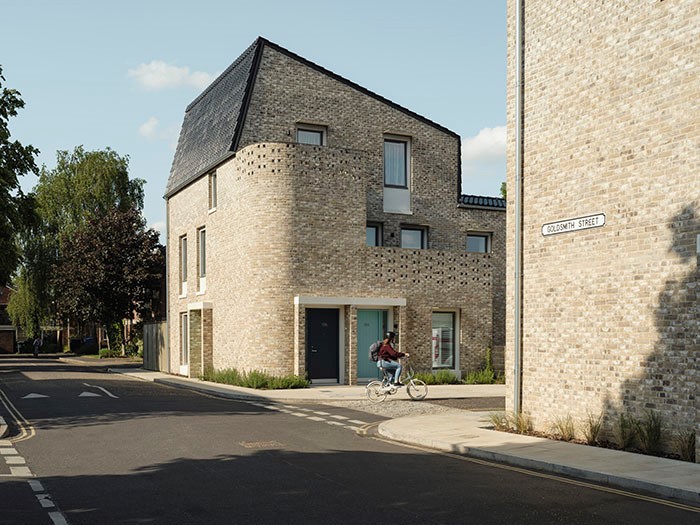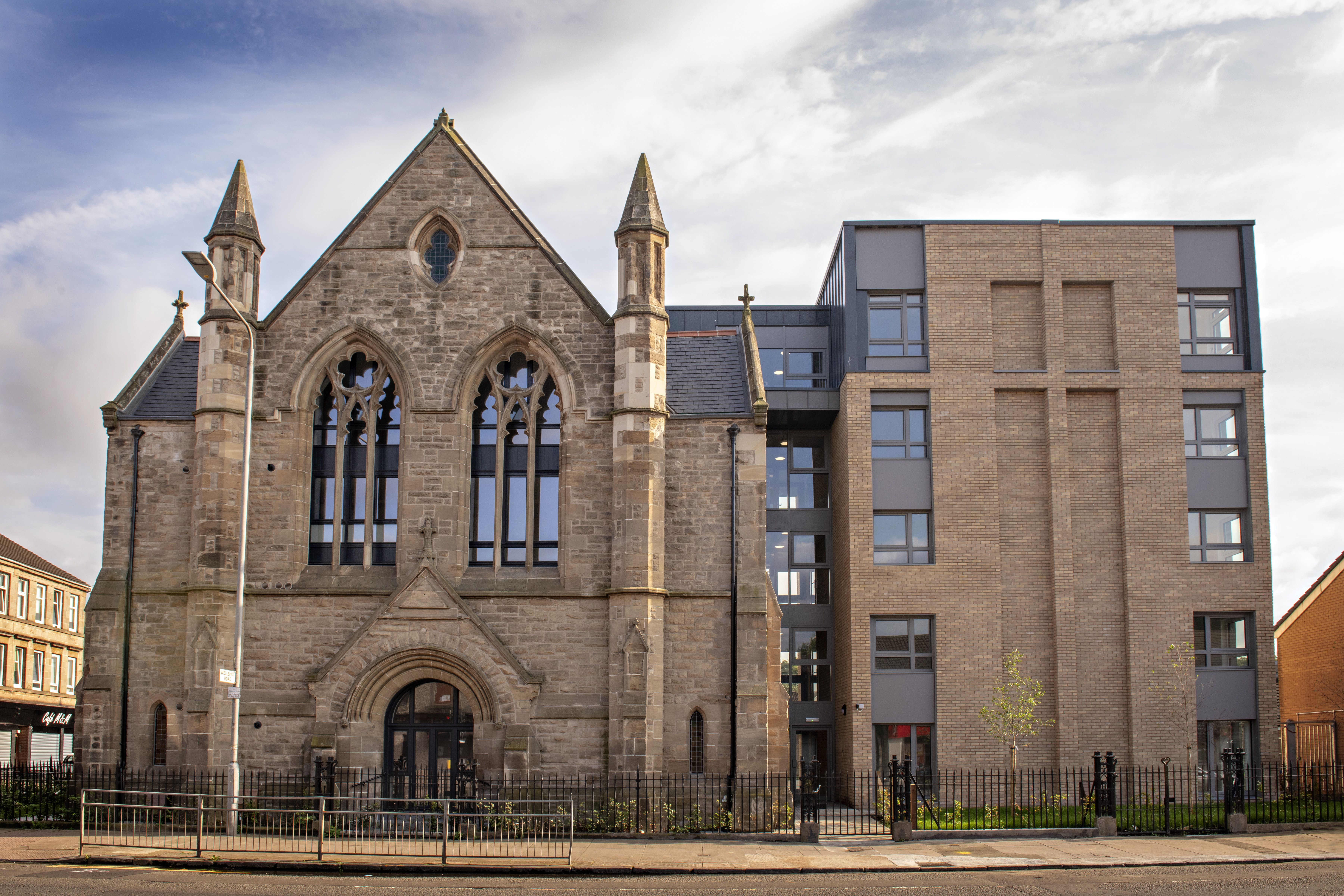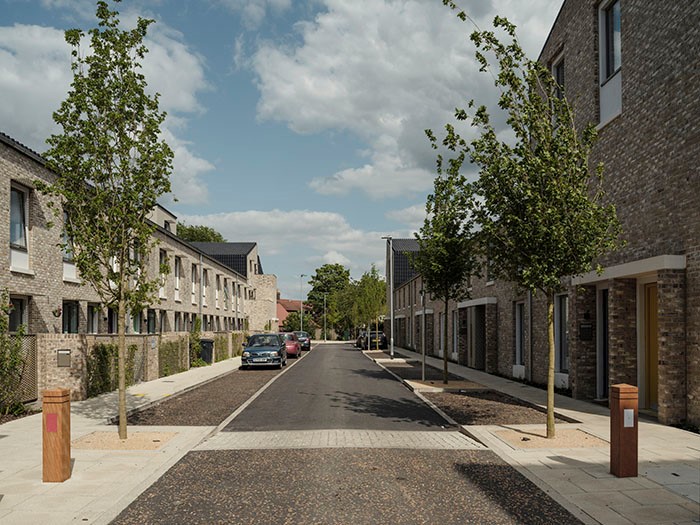Last year, a development of 105 homes on the outskirts of Norwich became the first social housing project to win the prestigious Royal Institute of British Architects Stirling Prize.
The Goldsmith Street estate was built by London architecture firm Mikhail Riches for Norwich City Council, and is the largest Passivhaus scheme in the UK. Passivhaus is an approach to building that provides a high level of occupant comfort while using very little energy for heating and cooling.
Goldsmith Street has been carefully thought through, and adjusted to take account of changing economic and environmental circumstances. In 2008, Norwich City Council selected Mikhail Riches to design the estate. The council had intended to sell the site to a local housing provider, but when the financial crash happened, the council decided to develop the site itself.
The architects have striven to ensure that the development acknowledges the historic context of the site:
“The design seeks to re-introduce streets and houses in an area of the city which is otherwise dominated by 20th century blocks of flats… Street widths are intentionally narrow at 14m, emulating the 19th century model.”
The homes themselves have been built to strict Passivhaus standards which include:
- very high levels of insulation;
- extremely high performance windows with insulated frames;
- airtight building fabric;
- ‘thermal bridge free’ construction;
- a mechanical ventilation system with highly efficient heat recovery.
Passivhaus standards typically reduce heating energy consumption by up to 90% as compared to traditional housing. For residents in the Goldsmith Street development, heating bills should be about £150 a year.
Eco friendly housing
In recent years, local authorities and housing associations have been responding to the increasing demands for housing stock to have lower maintenance costs, lower energy costs and fewer emissions of carbon and other gases that can be harmful to the environment and human health.
The Passivhaus Trust has highlighted a growing number of local councils and housing associations that have been exploring Passivhaus standards as a way of tackling these issues.
One of the most ambitious social housing Passivhaus projects is Agar Grove in the London Borough of Camden. Previously a 1960s estate with an unenviable reputation, Agar Grove has been rebuilt with affordable and energy efficient homes. The first phase, involving 38 social rented homes was completed in 2018, and has already won awards for sustainability and community consultation. Once complete, the 500-home estate will be the largest Passivhaus development in the UK.
In Glasgow, the city’s first Passivhaus development for social rent was opened by Shettleston Housing Association in September 2019. The project provides nineteen new homes for older people in an innovative design that combines a five storey Passivhaus tower with a converted church building. All of the homes benefit from high levels of thermal insulation to augment the sandstone coat of the existing church structure. The project was named the best affordable housing development at the 2019 Inside Housing Awards.
Meanwhile, the City of York Council has released plans to build more than 600 homes across eight sites over the next five years that will be built to carbon zero standards. The council has pledged that 40% of the homes will be affordable, with 20% retained for social renting. The developments, also designed by Mikhail Riches, will have very high energy efficiency standards that exceed standard Passivhaus levels. It’s predicted that residents’ heating bills could be around £60 a year.
Homes for the future
There is a now a growing sense that housing, as well as consuming great amounts of energy, can also be a positive force for change. Energy efficient homes can make a strong contribution to climate change adaptation measures, can make housing more resilient to increasingly common extreme weather events, and can provide opportunities to improve economic development, quality of life and social equality.
In the past year, with many local councils, combined authorities, devolved administrations and the UK government declaring ‘climate emergencies’, the pressure on housing providers to lead by example has intensified. At the same time, governments are setting out plans to ensure new homes are more energy efficient.
The Ministry of Housing, Communities and Local Government is currently consulting on the Future Homes Standard, which includes proposals to increase energy efficiency requirements for new homes from 2025. Similarly, the Scottish Government plans to introduce new regulations to ensure all new homes use renewable or low carbon heating from 2024. A 2019 report commissioned by the Welsh Government has recommended major changes to most homes in the country, including a major programme to improve insulation and heating.
The success and widespread publicity enjoyed by the Goldsmith Street project is likely to encourage other local authorities and housing associations to explore the possibilities of Passivhaus. But although the benefits are great, Passivhaus also presents significant challenges for housing providers.
Up-front costs are higher for Passivhaus developments, and there are additional maintenance and replacement costs. The technical requirements are strict, in order to ensure the maximum levels of airtightness and insulation. In addition, there is a shortage of skills needed to achieve the exceptional standards of construction demanded by Passivhaus (Norwich City Council has overcome this by bringing together a network of specialist contractors with the necessary expertise to work on Passivhaus projects).
Despite the challenges, Passivhaus seems to be offering a compelling answer to the significant problems of fuel poverty, climate change and the demand for high quality, affordable housing. As more local authorities and housing associations demonstrate its affordability, Passivhaus is breaking away from its image as a resource for the privileged and moving into the mainstream of social housing.
Further reading: blog posts from The Knowledge Exchange on energy efficiency at home
- PassivHaus … a home for all seasons?
- Energiesprong: how a Dutch solution could improve Britain’s energy inefficient housing
- Eating or heating: tackling fuel poverty in the UK
Follow us on Twitter to see what developments in public and social policy are interesting our research team.
Share
Related Posts
Supporting residents on the decarbonisation journey: leveraging data for effective retrofit projects
As the drive towards decarbonisation intensifies, the social housing sector’s ability to collect, store and manage vast amounts of data becomes increasingly critical. With a shared goal of creating warmer, carbon-free homes, housing associations’ strategic use of data is essential ....
The recent spikes in energy costs have thrown into sharp focus the challenge of heating our homes. Domestic heating is important, not just for our comfort and wellbeing, but to reduce humidity and prevent condensation. But because traditional heating systems ....
Tackling geographical inequalities is critical for ensuring that all parts of the country have the potential to prosper. When the UK was a member of the European Union, it was entitled to a share of funding from the EU’s structural ....




